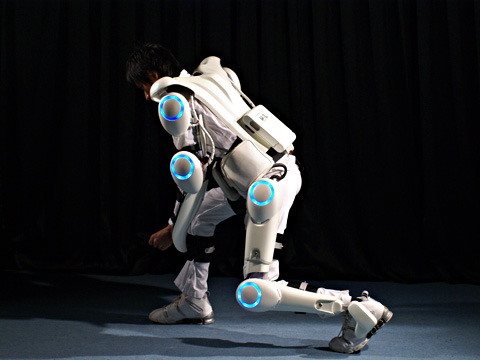Science fiction books and movies haven’t completely lied to us about cybernetic parts as we can see with the introduction of the first Mech suit.
HAL, otherwise known as Hybrid Assistive Limb, has been around for at least five years, but the newest version, HAL-5 recently debuted in Japan two days before one of the biggest quakes in history. The HAL was designed by Cyberdyne, a Japanese based cybernetics company (no not the company that created Skynet in “The Terminator”). Rather than going the route of creating robots to help with assisted living, Cyberdyne looked at how mechanized suits could work in conjunction with the human body.
The suit is equipped with sensors that detect biosignals that allows both the human and robotic components to move in unison. In fact, since the suit picks up these weak biosignals that the brain sends to the limbs, the suit actually moves a split second faster than our bodies can actually react. Besides this, it also increases user strength. When used continuously, the battery life of HAL is around 2 hours and 40 minutes. Not too long, but we’re guessing that future models will have increased battery life. The suit can be used in a multitude of ways: rehabilitation support, ADL support for disabled people, heavy labor support and rescue support at disaster sites. Besides the standard uses, the suit certainly has a lot of potential for military personnel. Clinical trials of HAL will begin in 2012 and initial costs will be around $14,000-$19,000.
Sure the name HAL is a bit ominous as is the name of the company Cyberdyne, but we’re hoping that these mech suits won’t suddenly lead to robots and cyborgs that plan to destroy the human race and take over the world. For the time being, however, this mech suit can help in a multitude of ways. The newest suit showcased in the International Forum of Cybernics 2011. Below is a movie of how the suit works.
If you like this you might also like: Japanese Breakthrough: Powerless Power Armor, Autom is the Supportive Robocoach and Real-Life Iron Man Suit it Plausible and Though Not Nearly as Cool Looking.
Via: CNET











